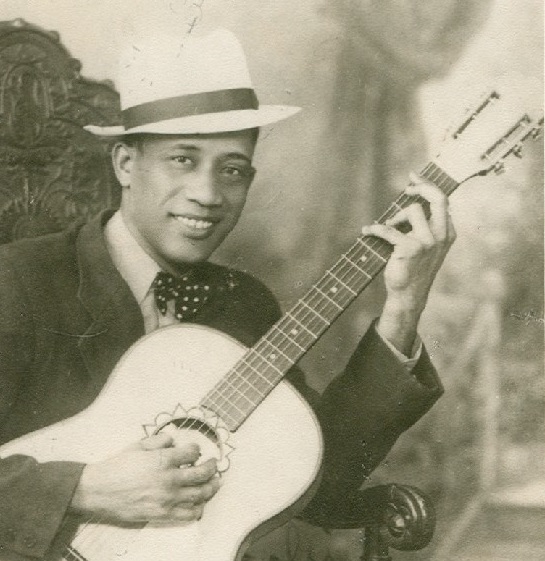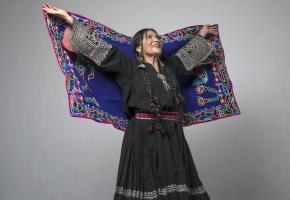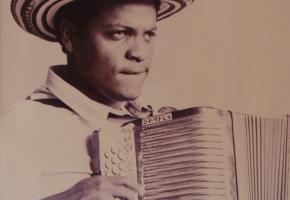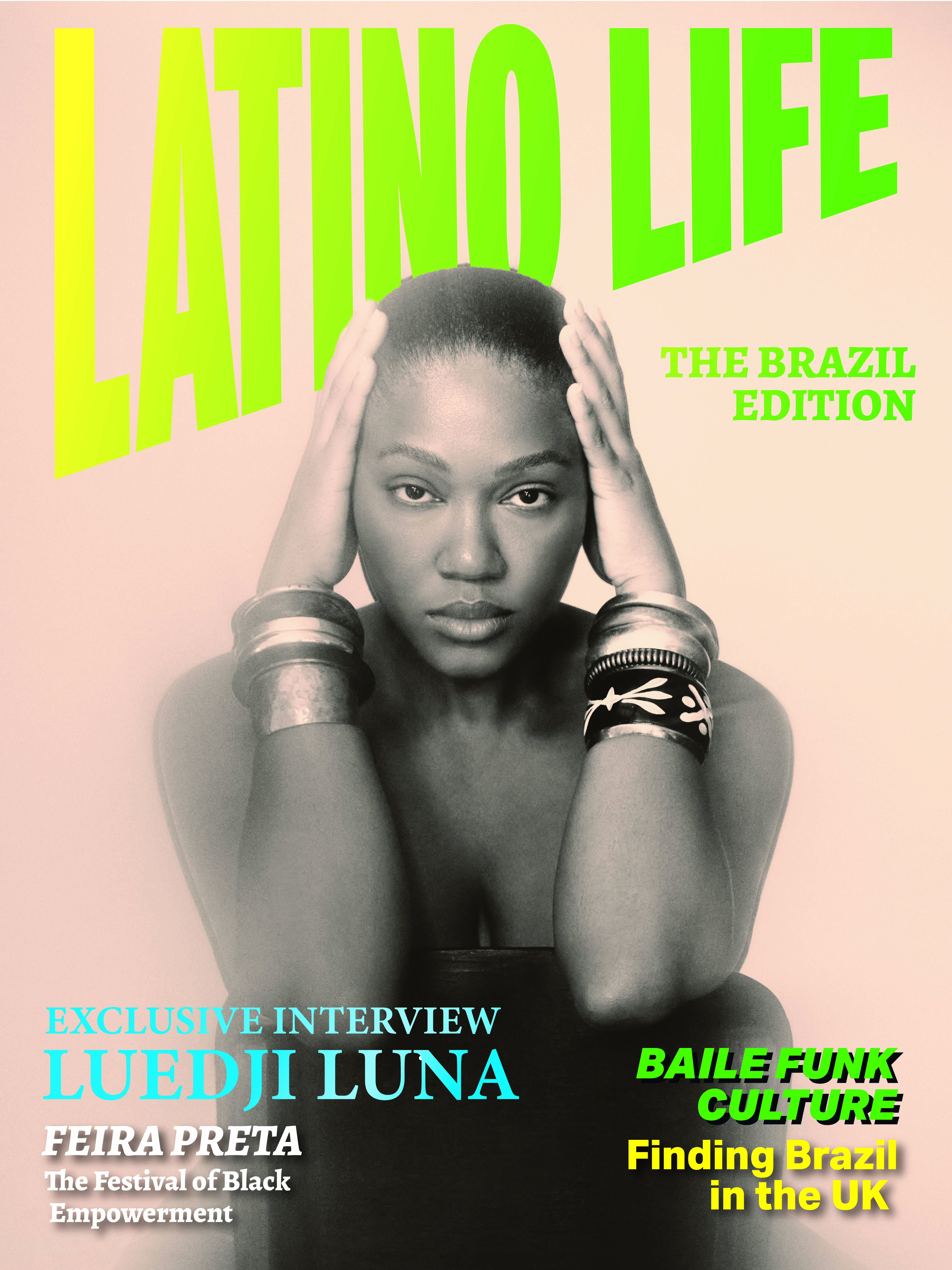B. Léza is the artistic name of Francisco Xavier da Cruz (1905-1958), and in addition to his extensive musical work, he also wrote poetry and texts about Cabo Verde and its culture. Some previously unknown recordings of him singing were found last year and are expected to be published by Tradison in Portugal.
Transatlantic voyage had been fertilising musical connections between the Americas and Africa throughout the 19th and 20th Centuries. Brazil and Cabo Verde exchanged important musical influences, and European dance styles became part of Cabo-Verdean tradition after picking up Brazilian influences on their way.
In 1997 the Brazilian author Glaucia Nogueira began a long bibliographical and disco-graphical investigation, complemented with hundreds of interviews, among Cabo-Verdean communities in France, Portugal, The Netherlands and in Cabo Verde, where she lived from 2002 to 2014.
The result - Cabo Verde and its Music – a Dictionary of Personalities, published in 2016, traces the biographies and discographies of musicians, singers, and other personalities who make up the musical universe of Cabo Verde.
Using material collected over a period of more than 20 years, a virtual museum is in construction, to share an extensive collection including texts and photos, but also videos, press cuttings, concert posters, disc covers and interviews. Many of these items require preparative technical work to permit them to be used in a virtual museum.
LatinoLife: What is the main topic of your thesis?
Glaucia Nogueira: Musical migration. Practices of music and dance that were forms of entertainment in Europe in the 19th Century spread across the world following the paths laid down on the map by colonialism. The Portuguese colony Cabo Verde received these influences from the capital as would be expected, but also indirectly from a number of other countries, since the position of the archipelago in the Atlantic: the USA, where a Cabo Verdean community has maintained strong links with their native land since the 19th Century; and Brazil, with which Cabo Verde where a cultural influence has left its marks in the islands. In both cases the songs and dances that Cabo Verde received are already transformed versions of European originals.
Songs originally played in elite salons, by musicians who were only there as paid entertainers, were appropriated by these guitar players and fiddlers, acquiring local features in the process. Through these musicians they passed from the salon to the backyard, and spread among the lower social classes. Waltzes, polkas, gallops, mazurkas and schottisches, were danced during the first decades of the 20th Century in Cabo Verde, along with Brazilian sambas and maxixes and a group dance there was the contradanca, whose name comes from the English ‘Country Dance’.
The connections with Brazilian culture were really strong in the late 19th and throughout the 20th century. There is a koladera (a lively dance style), "Sayko Daio", composed in the 1960s, which has the same melody as a song played at popular Brazilian dances in the 1930s. On Brazilian record labels at the time, it is described as a polka.
From the beginning of the 20th century, the Morna established itself as a popular musical form, so successfully that it became an emblem of Cape-Verdean identity, while musical styles of European origin decline in the face to new fashions in public taste. Starting in the middle of the 20th Century, many of these forms disappeared from most people’s memory. They remained in obscurity for about three decades, until after the independence of Cabo Verde, when the policy of the new government was to revalue these traditions, which then became part of the cultural heritage of the country.
My thesis describes the paths of these forms, from when they arrived in Cabo Verde until the present day. The mazurka and the contradança are now part of Cabo-Verdean traditions. In the thesis I also analyze the unique character of Portuguese influence in its colonies, because Portugal was also a receiver of influences from the dominant countries of that time, like Britain and France. An influence which manifested in consumer goods, fashions, songs and dances.
In the post-independence period, revolutionary fervour required a re-Africanization of the prevailing mentality, but songs of European origin, especially Mazurkas and contradanças, were not seen just as a link to the colonial past, as happened in other territories such as the French Antilles (Martinique and Guadaloupe). In Cabo Verde, uniquely, they are seen as a component of the country's cultural diversity and heritage.
LL: Brazilian influences on Cabo Verdean music have been present for over a century but Cabo Verdean music has only been noticed in Brazil since about 1990 – why is that?
GN: The worldwide success of Cesária Évora made Cabo Verde's music known in many countries where before the country itself had no visibility. The knowledge of her music in Brazil is part of this context.
Following the international success of Cesária Évora, which began with the album Miss Perfumado (1992), Cabo Verdean music gained visibility. And countries like France and The Netherlands had communities of Cabo Verdean immigrants since the 1960s, and in Portugal earlier. But previously, their music did not go outside the boundaries of these communities, their night clubs, restaurants and community events. Only after the Cesária "phenomenon" do Cabo Verdean artists gain access to other spaces, other stages. Cesária herself had performed in Portugal before being successful in France, but she never received attention from recording companies or a wider audience.
LL: You mention that CV musicians tended to mix Brazilian influences in a very eclectic way, without regard to the cultural distinctions that existed in Brazil - has this been a source of creativity?
GN: This makes Brazilian music appreciated and easily appropriated by Cabo Verdeans. In Brazil, the most intellectualized people do not like certain artists, who are considered “brega” (cheesy). These distinctions do not reach Cabo Verde. The same person can at the same time enjoy Tom Jobim (appreciated by a more elitist audience in Brazil) and “música sertaneja” (country music duos), or a romantic singer like Roberto Carlos.
LL: Rodrigo Lessa connected Cabo-Verdean, Brazilian and Cuban music - is this part of the return of originally African rhythms as was the case with the Rumba Congolesa?
GN: Rodrigo Lessa noticed certain musical affinities which led him to make an album bringing together artists from all three countries. Since the 1990s, there have been contacts between the artists, sometimes working together. Lisbon hosts a great diversity of artists, from various Portuguese-speaking African countries, who interact with Brazilian and Portuguese musicians, and it has functioned as a "cauldron" where various projects are metabolized involving all those people who bring their cultural experiences and musical traditions.
Congolese rumba and Afro-Cuban music in general had great success in Africa, and Fonseca, a Senegalese of Cabo Verdean descent was very successful in the 1960s although largely unknown today. Voz de Cabo Verde, an iconic Cabo Verdean music group, was heavily influenced by these songs, because its members lived in Senegal in the 1950s. Clarinetist Luís Morais composed and recorded many Cumbias, even whole LPs just of cumbias during the 1970’s - 1980’s, when Cumbia was popular all over Africa. This resulted from his earlier experience in Dakar, playing in night clubs, in the 1950s. At the beginning of my contact with Cabo Verdean music, I listened to those records and thought the songs were part of Cabo Verdean music, until I discovered that it was a foreign style with songs composed and played by Cabo Verdean musicians. Like zouk, or rap, which today have a strong presence in Cabo Verde. At that time, it was Cumbia.
The pleasure of dancing makes music freely circulate between different countries and regions of the world, because people who like to dance are receptive to new things.
Some of the musicians who accompanied Cesaria Évora during her international career were recruited in Cuba and they were always very comfortable playing Cabo Verdean musical styles. Mayra Andrade, for example, already had Brazilian musicians in her band and it seems that this has always worked well.
LL: Brazilian influences in CV have a long history?
GN: Cultural inputs originating in Brazil first arrived by sea, which brought the crews of Brazilian ships into frequent contact with the population of the islands. This had been happening since the 18th century, when boats converged on Boa Vista to purchase salt and orchil (a plant used at the time for dyeing).
Brazilian cultural influences in Cabo Verde, are also clear in the literary movement Claridade, which emerged in the 1930s, with a magazine of that name, influenced by Brazilian modernist writers such José Lins do Rego, Manuel Bandeira, Jorge Amado, among others. Cabo Verdean writers were very interested in themes that Cabo Verde and Northeast Brazil had in common, such as rural life, droughts, and famines. And there is also the sociological flavour of the texts. There are poems talking about Brazil or its characters, such as “Letter to Manuel Bandeira”, “Letter to Brazil”, “Você Brasil”, by the poet Jorge Barbosa, among other examples.
LL: And Cabo Verde adopted the Brazilian style of Carnival in preference to the Portuguese one.
GN: The Carnival parades that exist in Cabo Verde today are clearly inspired by the Rio de Janeiro carnival. There's a song that says, "Cabo Verde is a ‘brasilin’ (small Brazil)”.
Brazilian shortwave radio broadcasts began to reach Cabo Verde a century ago, so Brazilian music and artists became well known in the archipelago.
In the 1980s, TV appeared in Cabo Verde and Brazilian soap operas are now part of everyday life. For example, Sucupira, the name of a fictitious Brazilian city, was part of the history of a very successful soap opera from the 1980s, entered the local vocabulary, and is now synonymous with "market".
And evangelical churches of Brazilian origin are everywhere.
LL: Both countries suffered extreme droughts.
GN: Luís Gonzaga sang several songs that refer to the drastic climate situation that the Northeast has always lived through, with droughts, poverty and migration. Cabo Verde faced similar situations, and there is one Gonzaga song in particular (“Sina de Cabo Verde”) that I find interesting to compare with “Súplica Cearense”, as both say the same, from opposite sides of the Atlantic. The theme of both is: to die of thirst, or to die of drowning, when the rains, which are rare, turn out to be too strong.
LL: Were there any Brazilian influences on B.Léza?
GN: Both B.Léza and Luís Rendall, a great master of the acoustic guitar (called the ‘violão’ in Cabo Verde), were influenced. Rendall worked, in his youth on the island of São Vicente, at the beginning of the 20th century, as a Customs official, visiting ships in the port. He met Brazilian sailors, who usually had musical instruments on board, and certainly interacted with them. B.Léza was like a disciple of Rendall. And he certainly listened to Brazilian radio stations which from the 1920s introduced musical novelties to Cabo Verde.
There is an anecdote in my book about the time in 1937, when the crew of the Cuban navy cruiser Cuba went ashore to visit B.Léza, who was ill, and later sent him a letter in which they expressed “their interest for his mornas, whose harmonies they deeply felt”, and “considered the music of Xavier da Cruz immensely spiritual”.
Bau, who started recording in the 1990s, plays several string instruments. He initially played the cavaquinho in the typical way in Cabo Verde, just setting the pace. It was on discovering the “cavaquinho” (ukulele) solos by Valdir Azevedo (a great name of "choro", a Brazilian musical style largely based on string instruments), that Bau realized the greater potential of this instrument, and this was decisive in defining the direction of his career.
The Cavaquinho itself migrated across the Atlantic from Madeira to Hawaii in 1879, and there is a famous Brazilian song called Apanhei-te Cavaquinho, which is also the title of an interesting documentary film, directed by Ivan Dias (2013).
The Brazil-Cabo-Verde connections fit into a broader context of cultural exchanges across the Atlantic. European music and dances of the 19th century entered many territories of the 3 Americas driven by the dynamics of colonialism. Cuba, Jamaica, French Antilles, Brazil and other countries in Latin America that experienced cultural influences from European colonialism have evident examples of these processes in which songs were recreated, gaining a "local taste". In Brazil, for example, Schottisch (Scottish, in German) became Xote, a musical style typical of the northeast region. The mazurka, in Rio Grande do Sul, was also appropriated, and is called Rancheira. And many choro songs are based on polkas or waltzes.
LL: You published a book on the Batuku style which is much less known than the Morna and Coladera.
GN: My book on batuku is the result of my master's thesis, in which I traced the historical path of this musical expression. Documents going back to the 18th century (laws, poetry, travellers reports, etc.), show how colonial society viewed batuku with contempt as a mere amusement of slaves, and people who were in the lowest strata of society. In contrast, the morna was seen, from the beginning of the 20th century, as the representative music of Cabo Verde.
And after independence, the status of batuku changed. Among other popular traditions that were valued by the cultural policy of the time, batuku gained visibility, groups were stimulated. Around the year 2000, there was a musical movement in which new artists reinterpreted traditional batuku, bringing it into the scope of contemporary popular music. Just as, in the 1980s, had happened with funaná (another rural musical expression that had been despised like batuku). There was a whole social and historical process that led to the fact that Batuka is today a song that a superstar like Madonna is inspired by and includes in her shows.
Buy the book here


















